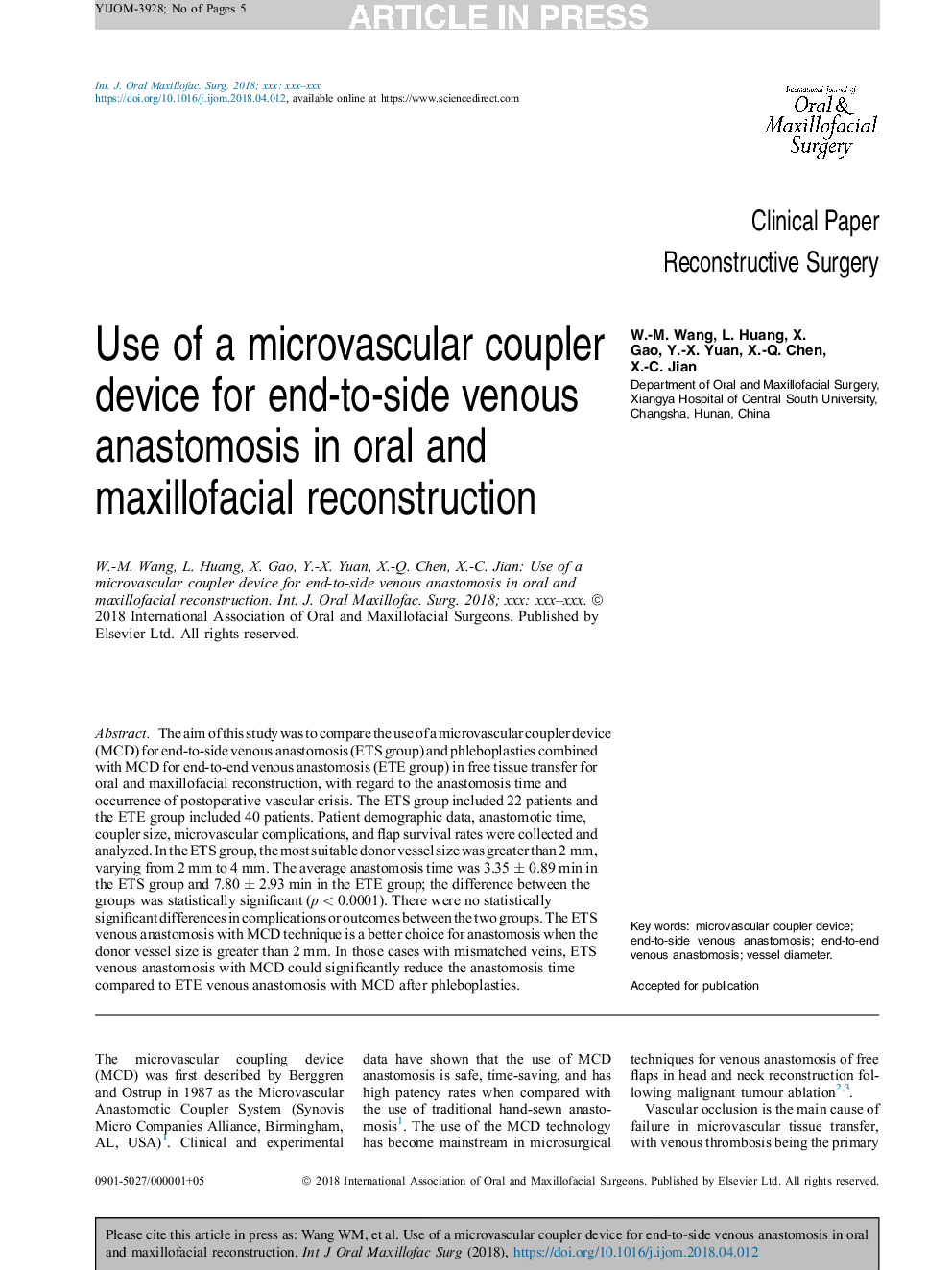| Article ID | Journal | Published Year | Pages | File Type |
|---|---|---|---|---|
| 8963553 | International Journal of Oral and Maxillofacial Surgery | 2018 | 5 Pages |
Abstract
The aim of this study was to compare the use of a microvascular coupler device (MCD) for end-to-side venous anastomosis (ETS group) and phleboplasties combined with MCD for end-to-end venous anastomosis (ETE group) in free tissue transfer for oral and maxillofacial reconstruction, with regard to the anastomosis time and occurrence of postoperative vascular crisis. The ETS group included 22 patients and the ETE group included 40 patients. Patient demographic data, anastomotic time, coupler size, microvascular complications, and flap survival rates were collected and analyzed. In the ETS group, the most suitable donor vessel size was greater than 2 mm, varying from 2 mm to 4 mm. The average anastomosis time was 3.35 ± 0.89 min in the ETS group and 7.80 ± 2.93 min in the ETE group; the difference between the groups was statistically significant (p < 0.0001). There were no statistically significant differences in complications or outcomes between the two groups. The ETS venous anastomosis with MCD technique is a better choice for anastomosis when the donor vessel size is greater than 2 mm. In those cases with mismatched veins, ETS venous anastomosis with MCD could significantly reduce the anastomosis time compared to ETE venous anastomosis with MCD after phleboplasties.
Keywords
Related Topics
Health Sciences
Medicine and Dentistry
Dentistry, Oral Surgery and Medicine
Authors
W.-M. Wang, L. Huang, X. Gao, Y.-X. Yuan, X.-Q. Chen, X.-C. Jian,
